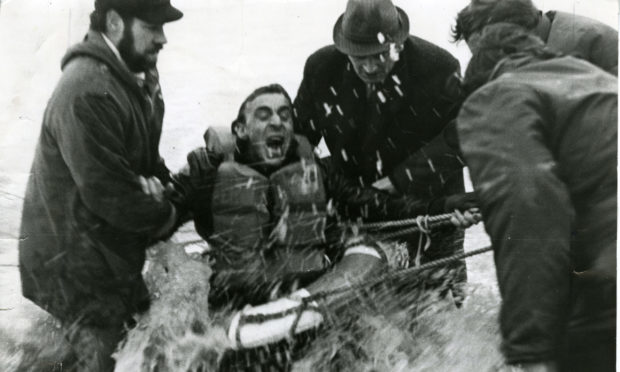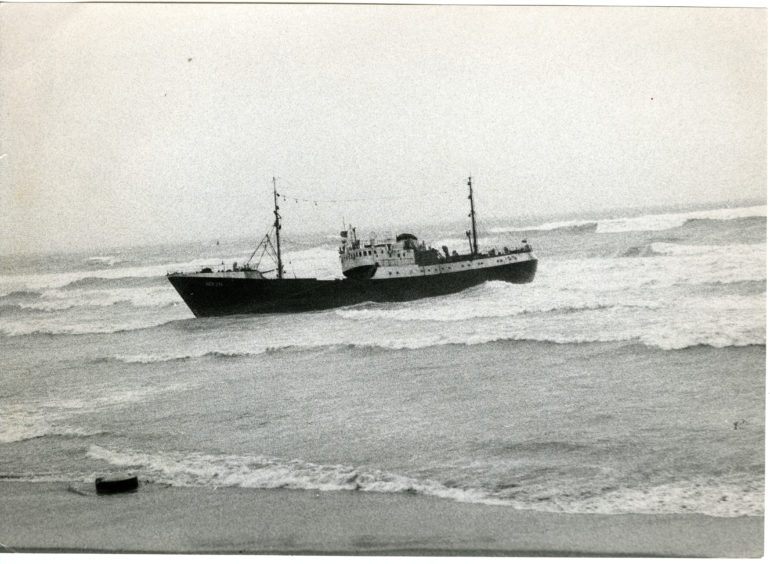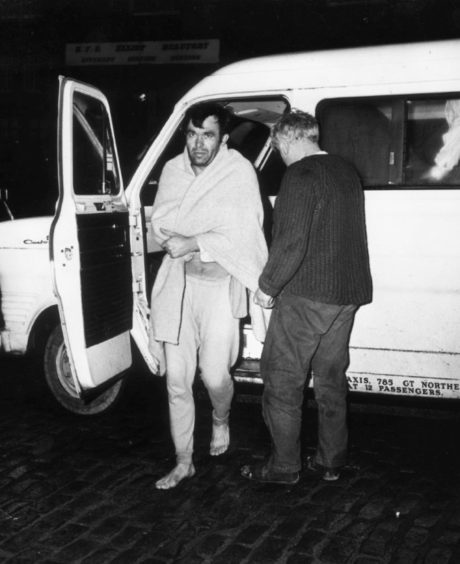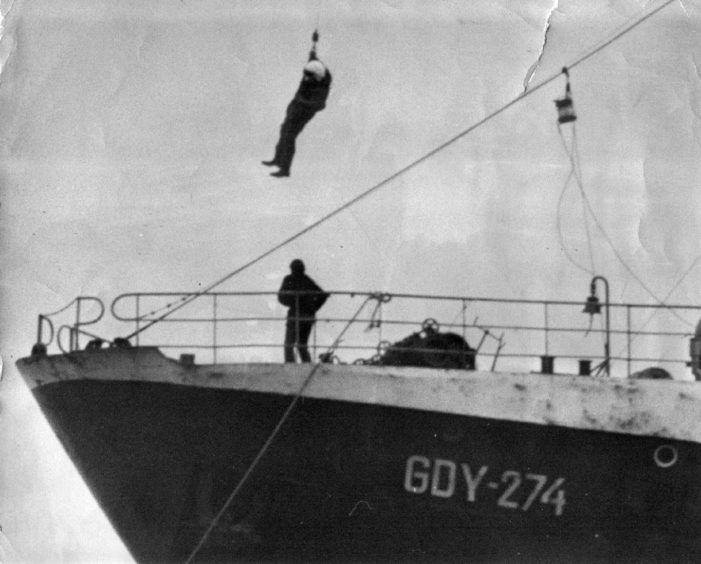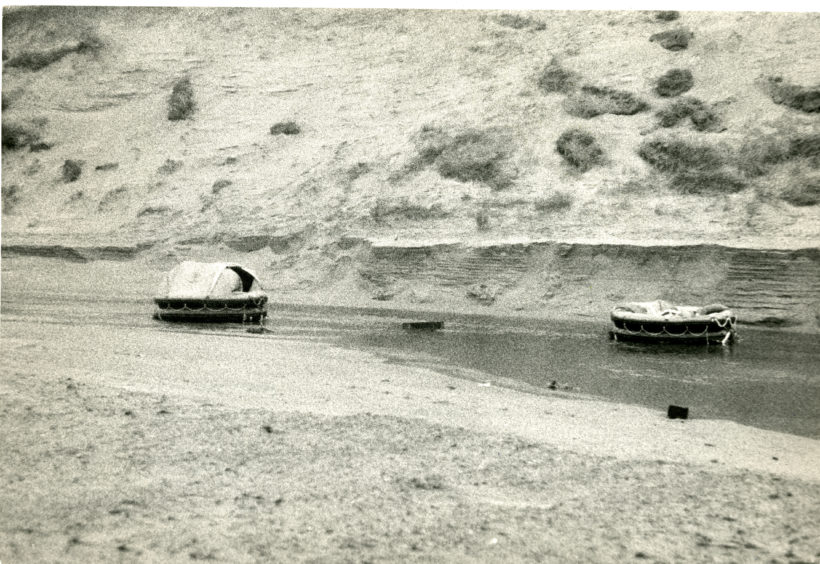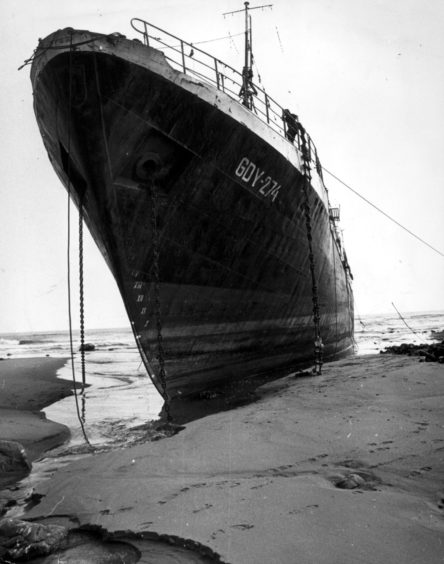Members of Murcar Golf Club were enjoying an evening drink in the warm clubhouse bar on a storm-driven night when suddenly two soaked and exhausted Polish seamen stumbled through the door.
The startled locals tried to make sense of where on earth the Poles had come from and what had happened to them.
Despite the language barrier – the sailors spoke no English – it became clear a ship had run aground near the course.
These two souls had made it ashore to safety.
But many others were needing saved.
The emergency services were called and a massive rescue operation was launched in the teeth of storm-force winds to reach the Polish trawler, Nurzec.
What played out on that fateful night of Friday January 4 1974, was a frantic scramble to get men off the stricken vessel in a howling gale, with the sea like a heaving cauldron.
It ended in tragedy with four lives lost.
The trawler had been heading to Aberdeen from Denmark, but the city’s harbour was closed due to the huge, battering waves.
The captain tried to anchor, but his ship was driven toward shore and hit a sandbank at around 5.30pm.
The two crew members who burst through the door of Murcar Golf Club, just 400 yards away from the stricken ship, had launched a dinghy.
They had barely made it halfway when it overturned and they waded the rest.
As the alarm was raised, the lifeboat Ramsay Dyce set out in the storm, but the crew couldn’t help without becoming trapped themselves.
Suddenly, the powerful lights of the Russian tug boat Gordiy, lit the night and five Soviet seamen launched a life raft towards the stranded trawler.
As it approached, 19 desperate trawlermen jumped into the rescue boat. Desperately overloaded, it capsized, with three of the Poles and one of the Russian sailors perishing, trapped beneath it.
The others, now struggling in the heavy seas, started to make for shore. A total of nine of them made it to the golf course. By now, locals were scrambling to the scene to help.
Salmon fisherman William Irvine waded into the sea to help drag five men to safety, by the headlights from a tractor.
He was later honoured by the Royal Humane Society for his bravery.
Another trawlermen turned up out of the black of night at a local cottage, where a family took him in and sheltered him, before taking him to a rescue centre set up at a nearby farm.
A total of 25 made it safely to land that night, many of them found shivering on the sands. Another four seamen were winched to safety from the trawler the next day, including the captain who refused to leave.
And as a sad footnote to the tragedy, the cox of the Ramsay Dyce, Albert Bird, later said that if all the trawlermen had stayed on board the Nurzec, no one would have died that night.
For those in peril at the north-east sea
The Nurzec was just one of many ships and boats to fall foul of the oft-dangerous waters around the north-east coast – but it was certainly one of the most dramatic.
We’ve opened our archives to look at other wrecks from over the years.
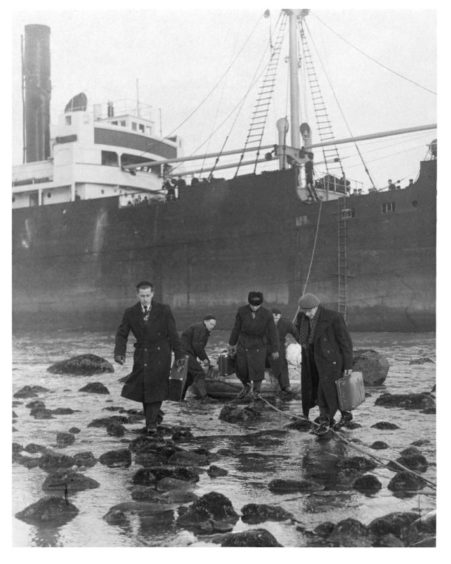
Stepping from the dinghy which took them all off the grounded Russian steamer Krymore, members of the crew pick their way across stones to the beach at Murcar in 1956.
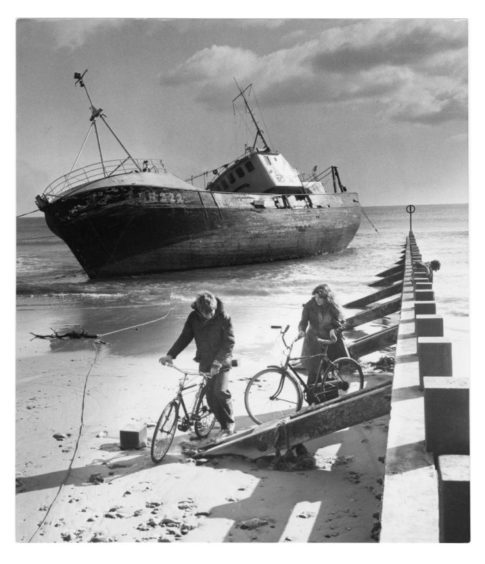
Stranded Karemma, the Leith-registered trawler which ran aground at Aberdeen provides a spectacle for visitors to Aberdeen Beach in 1976.
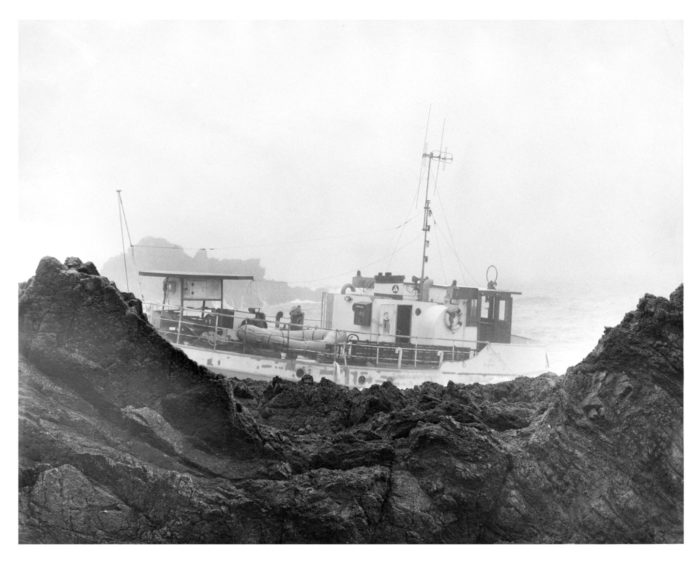 The Rotterdam coaster Maria W which ran aground on the notorious Scaurs of Cruden, near Whinneyfold, eight miles south of Peterhead in 1966.
The Rotterdam coaster Maria W which ran aground on the notorious Scaurs of Cruden, near Whinneyfold, eight miles south of Peterhead in 1966.
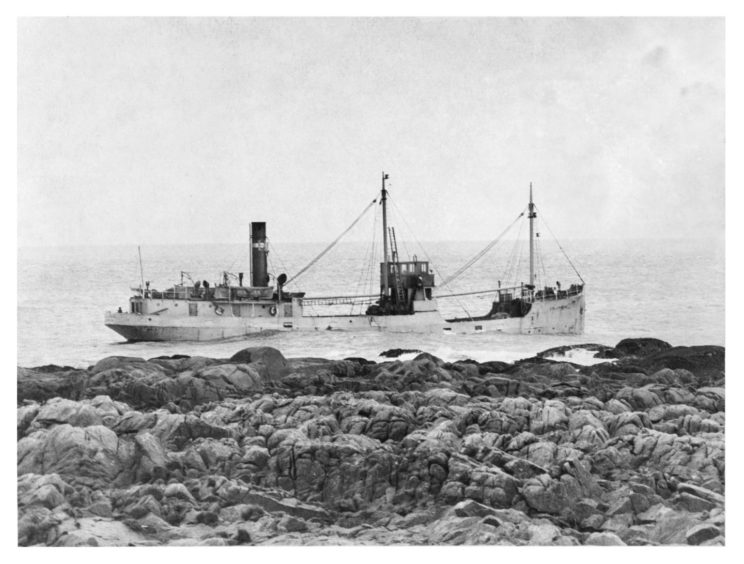
The Lerwick coaster Columbine hard on the rocks at the North Head, Peterhead, after it ran aground in 1949.
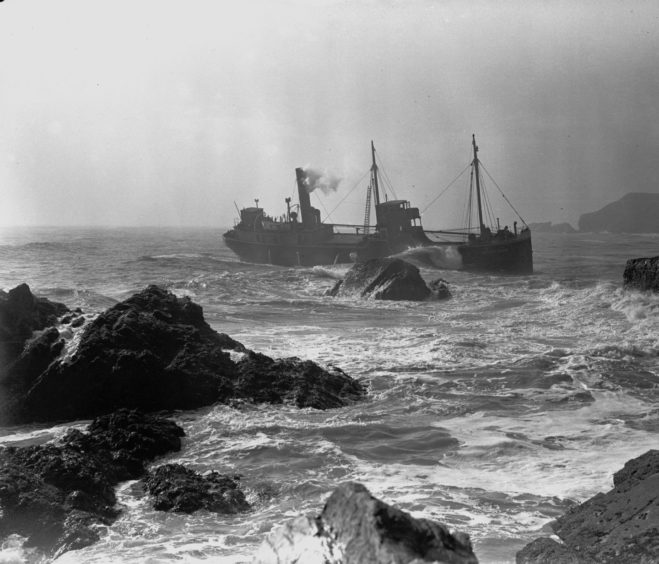
The Scottish coaster Brightside aground on the rocks at Collieston in 1949.
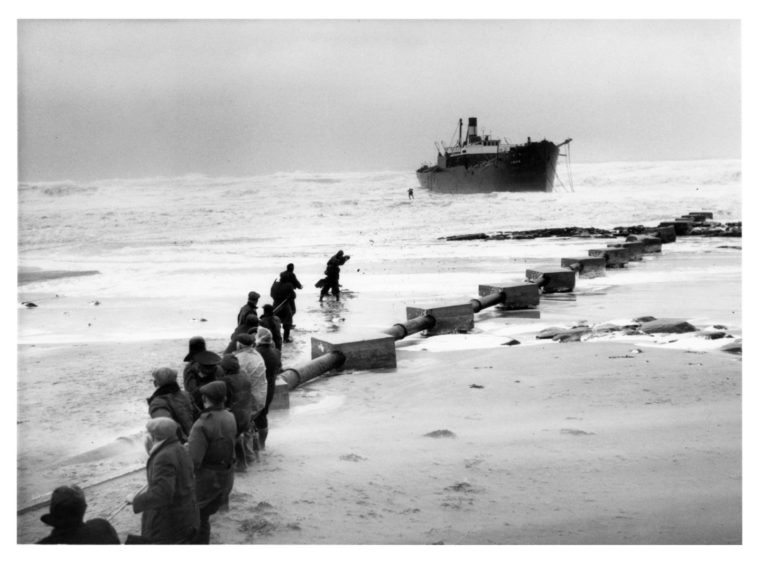
The Anna was a Finnish cargo steamer which ran aground on December 7 1959. The steamer lost its rudder at Rattray Head before running aground in a south-easterly gale at St Combs. The ship was eventually cut up for scrap, but part of the hull still lies on the beach and can be seen at low tide.
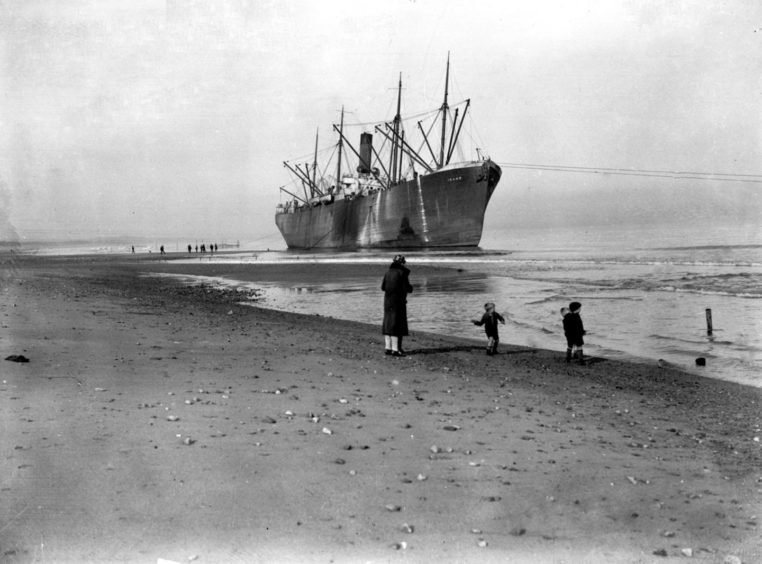
The American steamship SS Idaho aground at Aberdeen Beach in 1929, it was stranded for six months before tugs managed to pull it off.
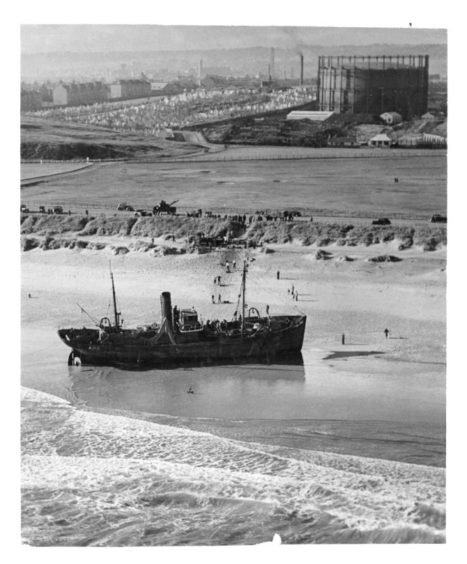
Not the best place to unload your catch, but that’s what fishermen on board the grounded Aberdeen trawler, Sturdee, are doing as it sits high and dry on Aberdeen beach in October 1955.
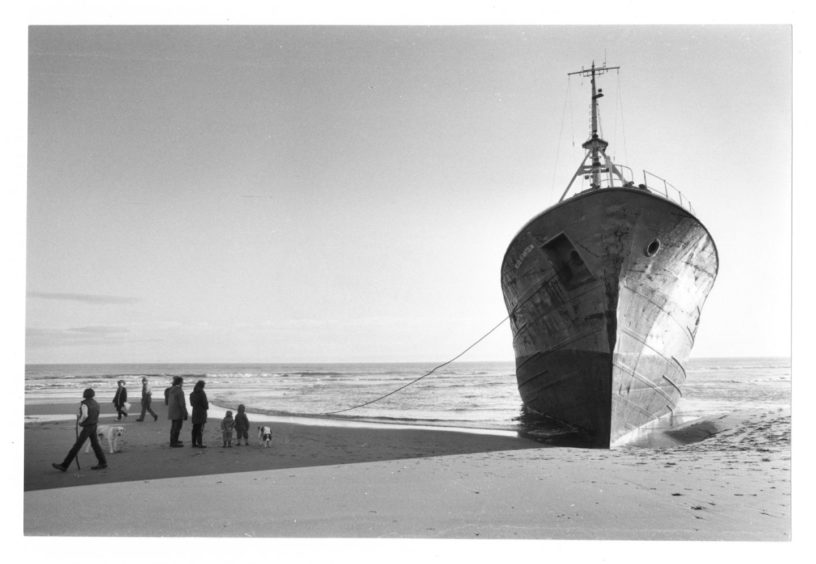
The Ross Khartoum, the ship wrecked on the North-east coast near Balmedie just before Christmas in 1980, was badly damaged and never sailed again.
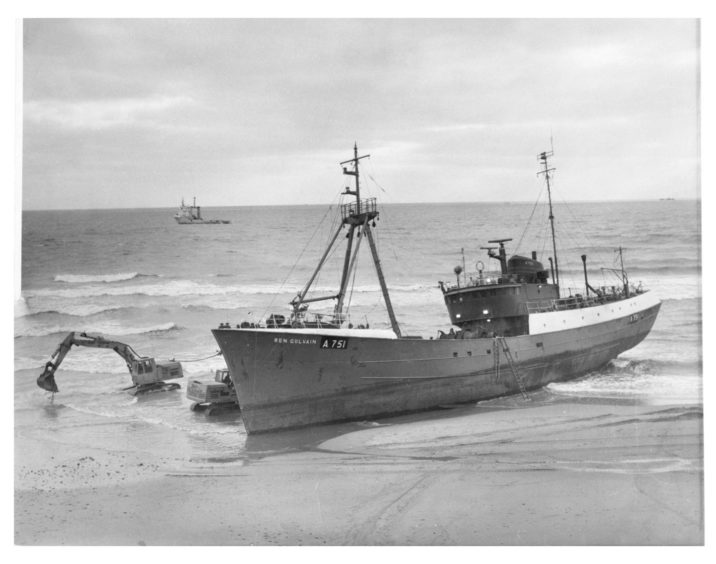
Mechanical diggers dredge sand from the side of the Ben Gulvain, which ran aground at Murcar in 1976.
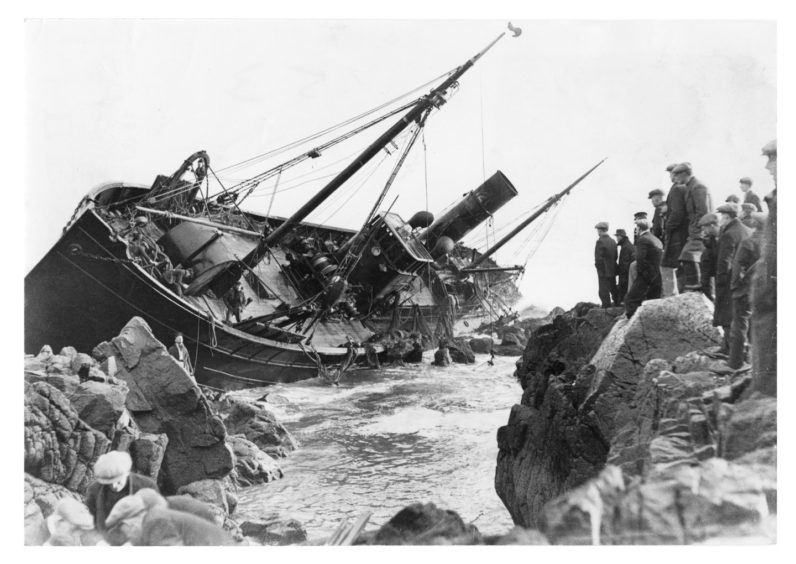
The Ben Screel which ran aground on the rocks at Girdleness in 1933.
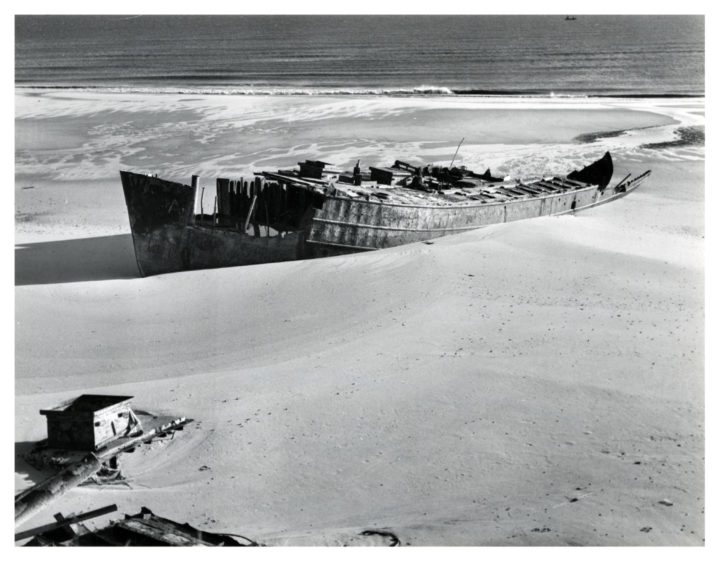
The Sheriffmuir – aground on the beach alongside Murcar golf course in 1980.
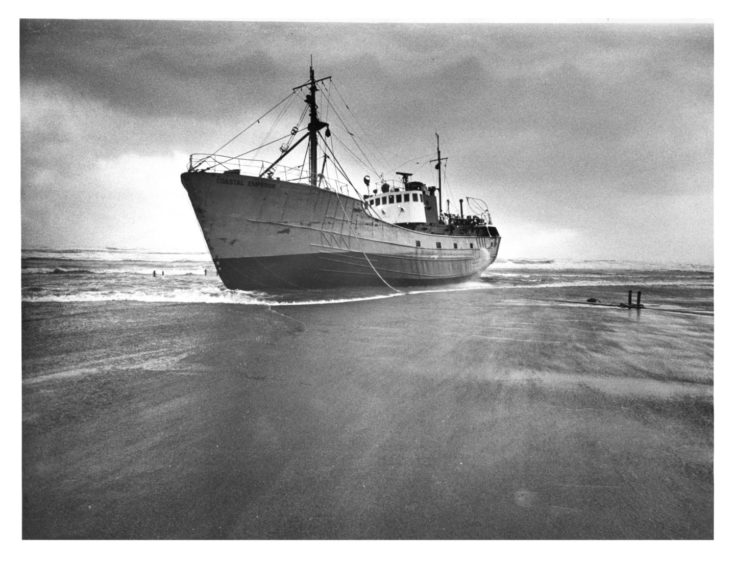 The Coastal Emperor high and dry on the Black Dog sands in December 1978.
The Coastal Emperor high and dry on the Black Dog sands in December 1978.

The Granton trawler, Contender, is pictured on the rocks near Cruden Bay after running aground at the mouth of the Ythan in April 1961.
